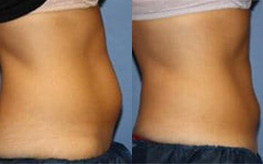Years ago when patients said, “I want the safe breast implant,” my husband and I knew what they meant. Saline. Saline implants weren’t perfect. They rippled, they were heavy, and they felt like plastic bags filled with water (because they were). But they were filled with IV saline, a substance that was meant to be inside the body. Besides, old silicone gels could get hard. Rock hard. Compared with rocks, bags of water looked and felt really good. We used to use saline implants almost exclusively–not that we had a choice, with the old silicone gels being banned. Even in 2006 when the FDA exonerated the gels of a long list of crimes and misdemeanors, patients still wanted the “safe implants.”
Contents
2006: Silicone Gel Implants Return
But a few maverick women did their research. They knew that the new silicone gels weren’t their mothers’ implants. Both the silicone gel and the implants shells had gotten better. And better. And better. Those brave few took the plunge, got silicone gel implants, and loved them. The new gels felt better, and they looked better. Word spread. Now we hardly use saline implants. Sientra, the breast implant company known for gummy-bear implants, doesn’t even make saline implants. These days, when a woman asks for the “safe implants,” I ask her to clarify, “Which ones do you mean?” Of course, I’m prepared for her answer: “The ones filled with saline. If they leak, my body will just absorb it.” Yes, that’s true. But there’s more to an implant than safe saline.
The Deflated Saline Implant
Every year, roughly one in a hundred women with saline implants experience a deflation. In ten years, that’s one in ten.

While intellectually it’s comforting for a patient to know her saline came straight from an IV bag, the breast with a deflated saline implant can look like a fallen soufflé. When a deflation happens on a beach vacation or a week before a wedding, the emotional tenor in a patient’s voice as she speaks to me can be frantic, like a Paganini violin. The relative urgency to replace the implant isn’t just for emotional relief. There’s a physical, biological reason as well.
A deflated implant is smaller than a filled one, so the scar surrounding it (called a capsule) can shrink until it’s too small for a replacement implant. Not all capsules shrink, but we don’t know which ones remain open. Until surgery.
Treatment of a Shrunken Capsule
Ideally the patient schedules her surgery within a week or so, since a delay makes shrinkage of the capsule more likely. If the capsule is kind and stays open, the replacement surgery is usually quick and uncomplicated. However, if the capsule shrinks, the surgeon must create room for the new implant by cutting the scar (called a capsulotomy) or removing it (called a capsulectomy). Risks of capsule work include bleeding, nerve injury, possible breast distortion, and recurrent capsular contracture.
Saline Patients Switching to Silicone Gels
So, yes, saline is safely absorbed. But that’s only part of the story. In our practice, the patient with a deflated saline implant nearly always switches to silicone gels. Now that we’re using primarily highly-cohesive silicone gel implants for breast augmentation, our re-operation rate has dropped significantly. That makes us happy, because our patients have better things to do.






